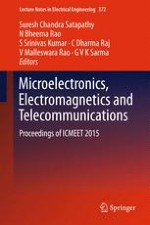2016 | OriginalPaper | Buchkapitel
Security Issues in Cognitive Radio: A Review
verfasst von : Shriraghavan Madbushi, Rajeshree Raut, M. S. S. Rukmini
Erschienen in: Microelectronics, Electromagnetics and Telecommunications
Verlag: Springer India
Aktivieren Sie unsere intelligente Suche, um passende Fachinhalte oder Patente zu finden.
Wählen Sie Textabschnitte aus um mit Künstlicher Intelligenz passenden Patente zu finden. powered by
Markieren Sie Textabschnitte, um KI-gestützt weitere passende Inhalte zu finden. powered by
